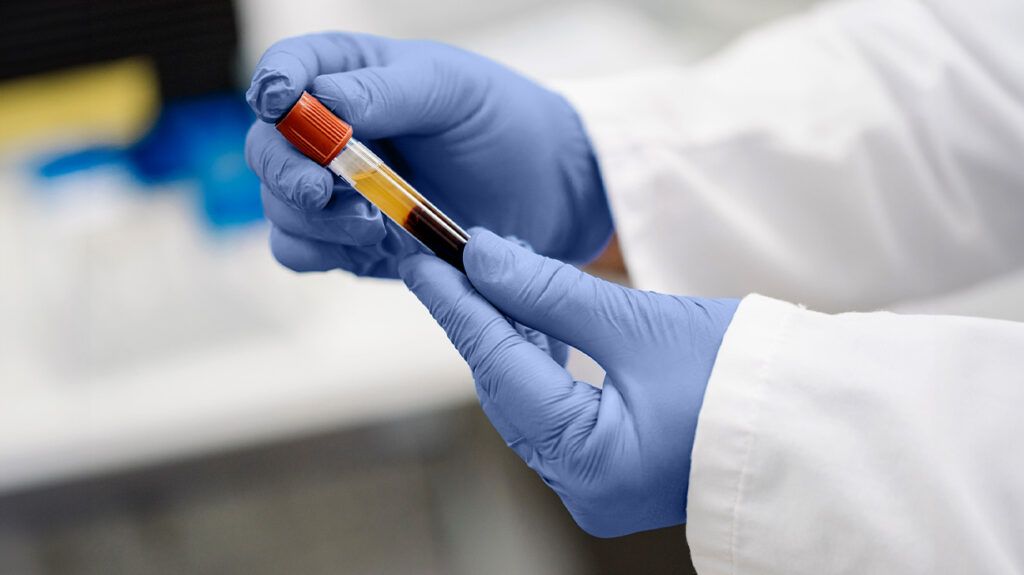An HIV RNA test is a test that can detect HIV in a blood sample. It can detect HIV sooner than other types of tests. As such, it may help those displaying early symptoms with recent or possible exposure to HIV.
HIV is a virus that targets the immune system. It attacks and damages white blood cells, which circulate around the body to detect infection and problems in other cells.
As HIV damages these cells, it reduces the body’s ability to fight other infections and diseases. As such, HIV is a serious medical condition. It increases the risk and severity of opportunistic infections and some types of cancer.
Different tests, such as an HIV RNA test, are available to detect HIV. It can detect whether the genetic material of HIV is present in a blood sample. This type of test can tell if a person has HIV and how much virus is present in the blood, also known as the viral load.

HIV is a type of
Read on to learn more about the HIV life cycle.
Also known as an HIV viral load test, an HIV RNA test is a type of nucleic acid test (NAT). This is an umbrella term that refers to different techniques to accurately and reliably detect the genetic material of a microorganism, such as the RNA of HIV. Examples of viral load tests include:
- reverse transcriptase-polymerase chain reaction (RT-PCR)
- quantitative branched DNA (bDNA)
- qualitative transcription-mediated amplification
These tests measure the HIV viral load in a blood sample. This refers to how many particles of HIV are in a blood sample. Test results display the number of copies of HIV per milliliter (mL) of blood.
Health experts consider a viral load above 100,000 copies/mL to be high. This suggests the infection is active, the immune system is not fighting it well, and the disease may progress quickly. Generally, an undetectable HIV viral load refers to less than 20 copies/mL. This does not mean there is no virus. It means there is not enough present for the test to detect it.
Read on to learn more about HIV viral load.
HIV RNA tests provide useful information. They can help with:
- diagnosing and monitoring HIV infection and disease
- guiding recommendations for treatment
- monitoring responses to treatment and predicting the future course of the virus
NATs, such as HIV RNA tests, can detect HIV
However, as HIV RNA tests are expensive compared with other tests, healthcare experts often use them for monitoring HIV treatment and not for routine screening.
A high viral load suggests the immune system is not fighting HIV very well. As such, HIV RNA tests can monitor the progress of an HIV infection and how well treatment is working. If treatment is effective, the viral load should be very low or undetectable by an HIV RNA test.
People with an undetectable viral load can live long, healthy lives and will not transmit HIV to their partners through sex. However, an undetectable level does not mean the virus is not present; it means the amount of HIV is too low for the test to detect. As the virus can rebound to detectable levels, it is important for a person to continue taking their HIV medication.
In some cases, healthcare professionals may use HIV RNA tests on newborn babies born to a person living with HIV. This is because it is possible to pass HIV to a baby during pregnancy, during childbirth, and through breast milk.
A person does not need to prepare for an HIV RNA test.
During the procedure, a healthcare professional will take a blood sample from a vein in the arm. After inserting the needle, they will collect a small amount of blood in a test tube or vial. A person may feel a stinging sensation when the needle goes in or out. The procedure typically takes less than 5 minutes.
It may take
In addition to HIV RNA tests, the Centers for Disease Control and Prevention (CDC) notes that there are
The immune system produces antibodies following exposure to pathogens, such as HIV. Antigens are substances that can cause the immune system to activate. If a person has HIV, they will have an antigen known as p24 before antibodies develop. As such, while HIV RNA tests can detect HIV the
As the name suggests, an antibody test looks for HIV antibodies in a blood or oral fluid sample. Similarly, an antigen/antibody test looks for both in a sample.
To help prevent contracting HIV, the
- abstaining from having vaginal or anal sex
- choosing sexual activities with less risk, such as oral sex
- using condoms correctly
- undergoing regular testing for STIs
- not injecting drugs
- never sharing needles, syringes, or other drug injection equipment
- not having sex when using substances
- using HIV prevention medications, such as preexposure prophylaxis (PrEP) and postexposure prophylaxis (PEP)
If a person has HIV, they should continue taking HIV medication, such as antiretroviral therapy (ART), to maintain an undetectable viral load.
An HIV RNA test, or viral load test, can help detect the amount of HIV present in the blood. Healthcare professionals typically use them to monitor HIV not to screen for it. As such, these tests can help monitor the effectiveness of HIV medications, such as antiretroviral therapy.
